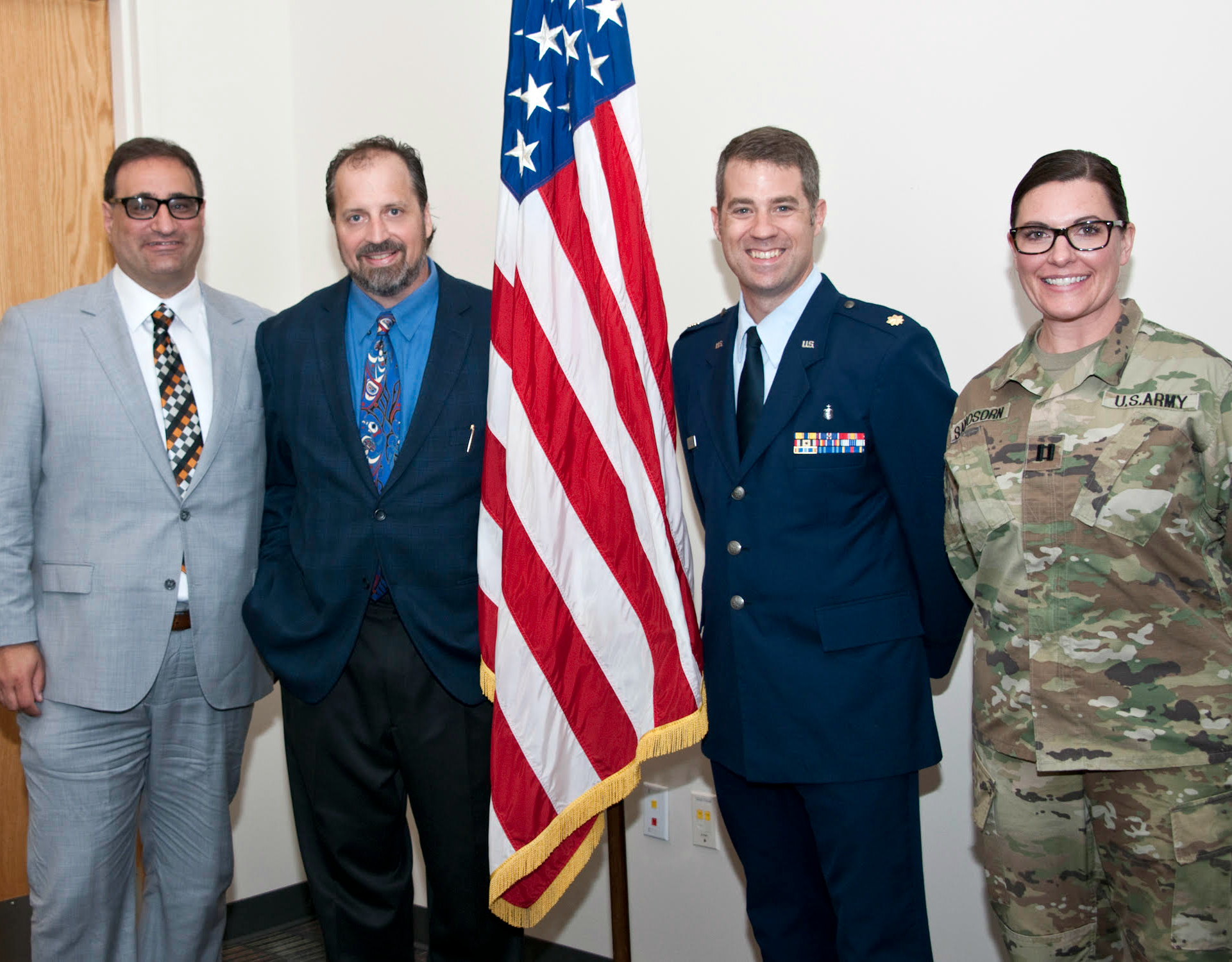Get Your Game On: Using Gaming Technology in Health Professional Education Conference focuses on Game-Based Learning and Simulation
Uniformed Services University of the Health Sciences, Bethesda, Maryland
M. Trapani and C. Collins
Dr. Eric B. Bauman and Dr. Thomas B. Talbot opened this year’s USU Education Day Conference with keynote addresses Game-Based Teaching and Learning: Theoretical Approaches and Frameworks for the Health Sciences and The Great Game – how elements of play enable awesome medical simulations.
Their presentations to faculty leadership, staff, and students from the Uniformed Services University for Health Science (USUHS) set out to answer the question: how can current teaching methods be improved to better engage students and established healthcare clinicians and professionals at a more intuitive level?
Their answer is game-based learning and simulation.
Game-based learning, distinct from gamification, goes far deeper than adding competitive elements like badges and points. Instead, effective game-based learning immerses the player/learner in a game or simulation that aligns learning objectives with real world situations, bridging the gap between the abstract dissemination of knowledge typical of traditional teaching methods and hands-on, in-person clinical training.
Steeped in pedagogy, game-based learning and simulation deliver:
- A medium in which digital natives are comfortable learning (Prensky, 2001)
- “Designed Experience” i.e., participant experience as performance (Squire, 2006)
- Games that fit into curriculum
- Experiential Learning (Kolb, 1984)
- Culturally relevant content, an “ecology of culturally competent design” (Games and Bauman, 2011, Bauman and Games, 2011)
The U.S. Military and other organizations in high stakes fields have seen the value in game-based learning, recognizing the need for educational methods that go beyond the textbook. Whether it be finance, healthcare, or law enforcement, when time is a factor, game-based learning can address the difference between knowing what to do in theory and knowing what to do in practice.
For more information on projects, speaking engagements and services provided by Dr. Eric B. Bauman visit Clinical Playground on Facebook. You’ll find more information about Dr. Talbot here.
References
Prensky, M. (2001). Digital natives, digital immigrants part 1. On the Horizon, 9(5), 2-6.
Squire, K.D. (2006). From Content to Context: Videogames as Designed Experience. Educational Researcher, 35 (8), 19-9
Kolb D. Experiential learning: Experience as the source of learning and development. Upper Saddle River, NJ: Prentice Hall; 1984
Bauman, E.B. and Games, I.A. (2011). Contemporary theory for immersive worlds: Addressing engagement, culture, and diversity. In A. Cheney and R. Sanders (Eds) Teaching and Learning in 3D Immersive Worlds: Pedagogical models and constructivist approaches. IGI Global.



